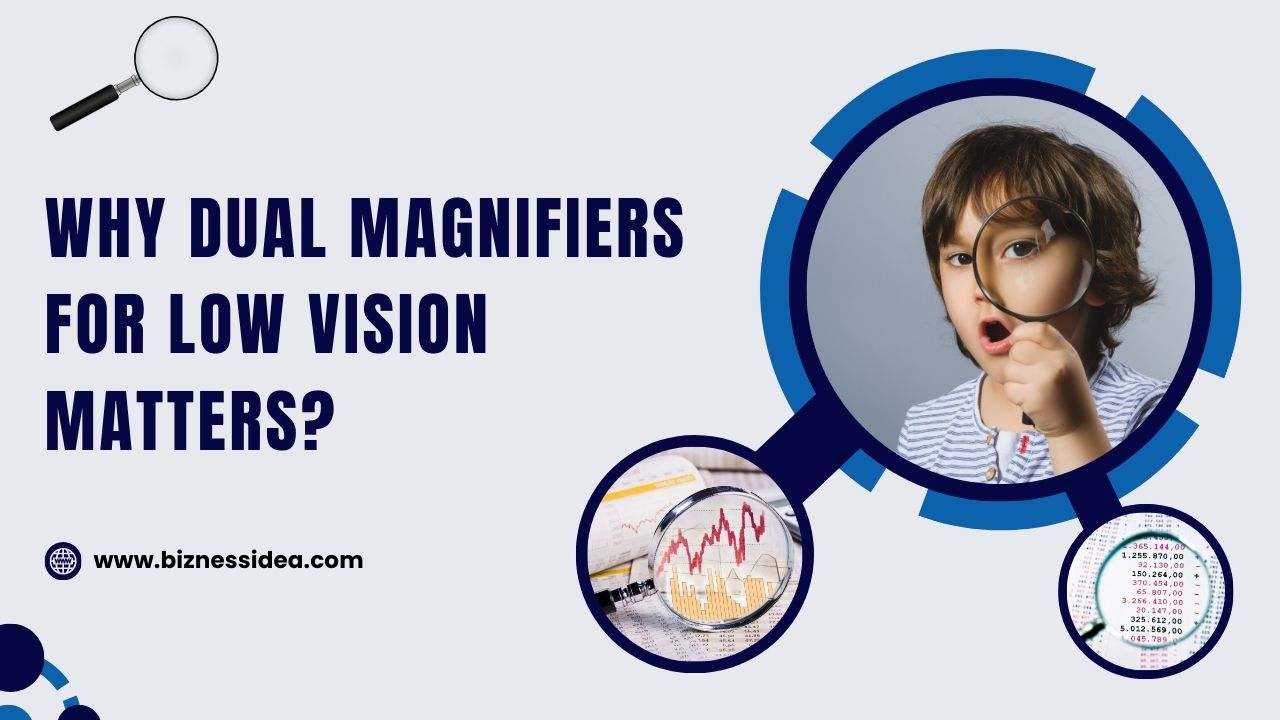A profession or a hobby requiring inspection of small objects like insects, bugs, rocks, leaves, etc., requires clear and close vision. Dual Magnifiers for low vision play a vital role in completing accurate inspections of small things. These advanced tools give a closer view of vision and allow you to bring a small object closer to your eye than you usually could. Additionally, dual magnifiers include different levels of magnification so you can switch between any one when required. In this article, we’ll discuss more about dual magnifiers, and their unique benefits.
What are Dual Magnifiers for Low Vision?
A dual magnifier for low vision uses a lens to produce a magnified image of a small object. This tool makes things appear more prominent to the viewer. The magnifier has different levels of magnification. It features two different lenses with distinct magnification powers. The tool is used for tasks requiring close-up work, like inspecting small details in objects, jewellery, model building, reading the fine print, etc. This double-lens magnifier allows a user to switch between magnifications depending on the inspection manually.
What is a Lens Magnifier?
A lens is a curved piece of glass or plastic that bends light and makes objects look bigger or smaller than they actually are.
What are the Properties of a Dual Magnifier For Low Vision?
The following are some properties of dual magnifiers for low vision:
- Dual magnifiers offer a high magnification power to view objects precisely.
- The magnifying tool increases the level of distortion to make objects appear differently from their original state.
- Magnifiers for low vision enhance the level of vision to inspect small details of objects properly.
- Despite offering various magnification options, these magnifiers are usually compact and easy to carry.
How Do Magnifiers For Low Vision Work?
You may know that light travels in a straight line. But, it changes speed and direction when it passes via different mediums, such as lenses. A convex lens is thicker in the middle and when light passes via it, the lens bends the light. Due to this bending, light rays converge and create a focal point. This is known as Intersection, which forms an image on the other side of a lens. Thus, when you keep a magnifier close to your eye, the lens forms a magnified image beyond the object, making the object bigger while viewing.
Why Do Most Magnifiers For Low Vision Use Convex Lens Only?
As discussed above, magnifiers are designed with a convex line that bends light to create a focal point, making objects bigger when viewing. However, a concave lens spreads out the light when it passes through it, which results in the opposite effect as the convex lens by making objects appear smaller. Concave lenses could play a role in magnification when used in a combination of convex lenses. Also, instruments like refracting telescopes use both convex and concave lenses to adjust the focus and prevent distortion.
Some Additional Benefits of Dual Magnifiers
Below are some benefits of dual lens magnifiers:
- Versatility: Dual magnifiers are versatile because of their different magnification levels, which allow users to pick any suitable one for the task.
- In-Depth Perception: These magnifiers are designed to improve in-depth perception, which is helpful while working with three-dimensional objects.
- Accurate Object Details: Dual lens magnifiers offer the advantage of examining details accurately without causing eye strain. This feature sets them apart from single-lens magnifiers, which may need to provide more accurate detail representation.
- Utility: A magnifier can be used for multiple tasks, such as reading small print, exploring the outdoors, and examining tiny objects.
Some Considerations Before Choosing Dual Magnifiers For Low Vision
There are some parameters you need to consider if you’re searching for the best magnifier:
- Magnification power is the most essential parameter. Also, the magnifier lens usually ranges between 2x to 10x.
- A dual magnifier, one side should offer a generic view and the other side should offer a high magnification for detailed inspection.
- Look for the compact models so that you can easily carry the magnifier.
- Plastic magnifiers are best as there’s no risk of any damage or scratches to the lens.
- Ensure the lens is easy to adjust and interchange when required.
- Working distance also matters. If your inspection requires the use of tools, it’s preferred to look for magnifiers with a long working distance. However, if you need to do a close-up inspection, you can go for magnifiers with a small working distance.
Where Can I Find the Best Dual Lens Magnifier?
There are many reputed brands offering products like double-lens magnifiers. Visit their offline or online stores and explore a wide range of products, considering the features and considerations discussed above. Moreover, check the customer reviews on a particular product, which can help you make an informed decision about buying.
Conclusion
Dual magnifiers for low vision are great tools for precise examinations. They help you view a single detail clearly without impacting your eyes. These innovative tools are used in jewellery inspection, electronic components, artwork, biology, and watchmaking. So, search now for the best magnifier and leverage its benefits for a better and clearer inspection.













